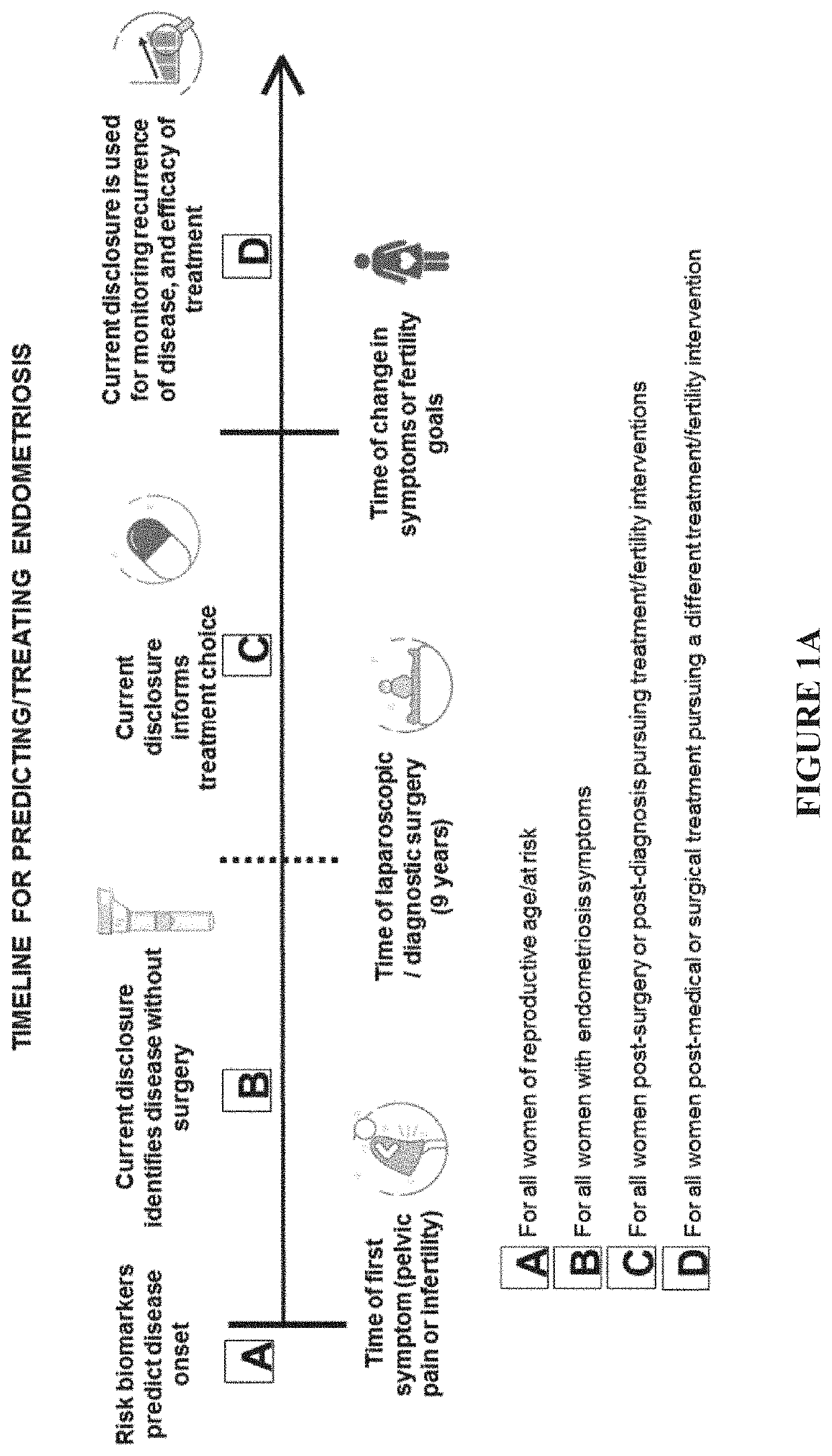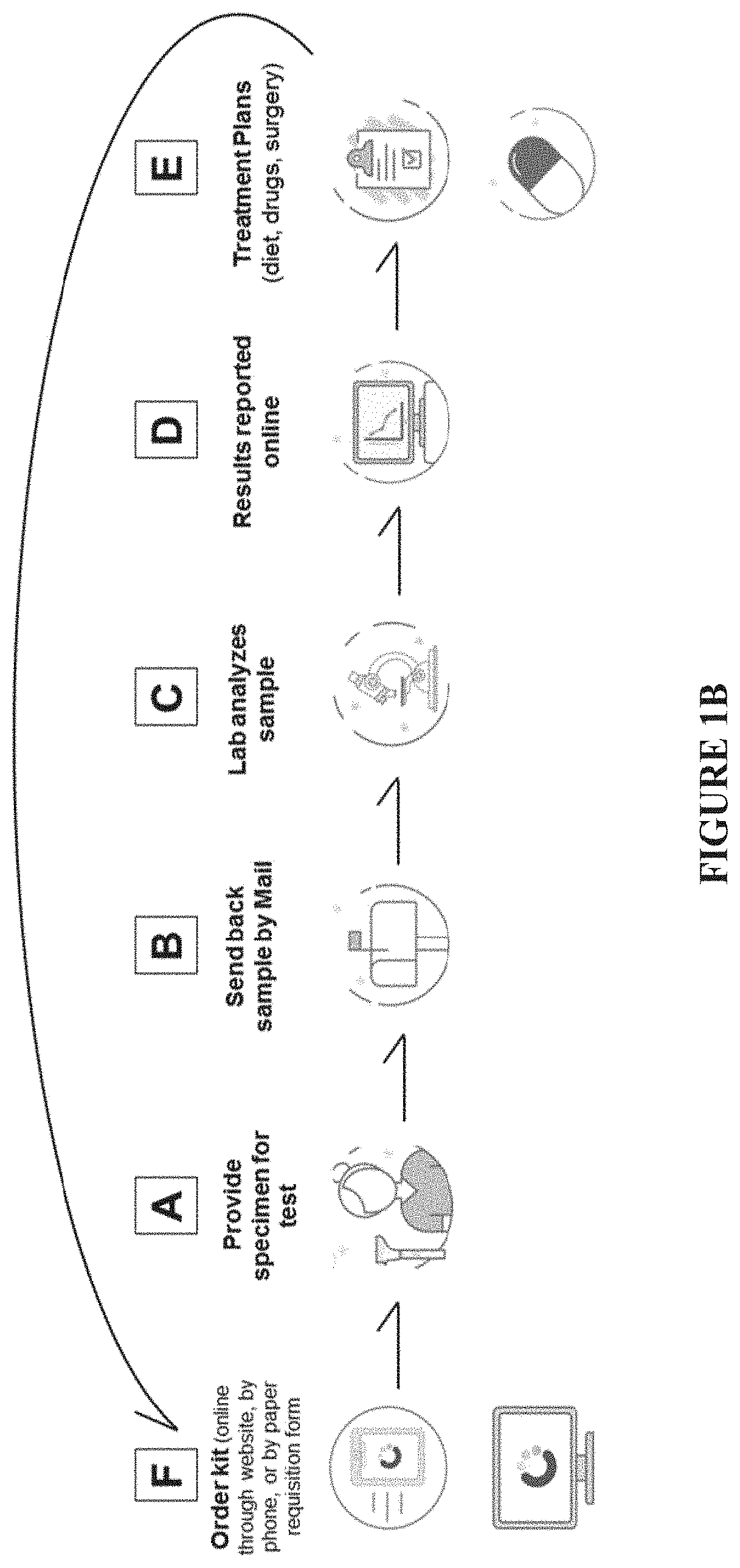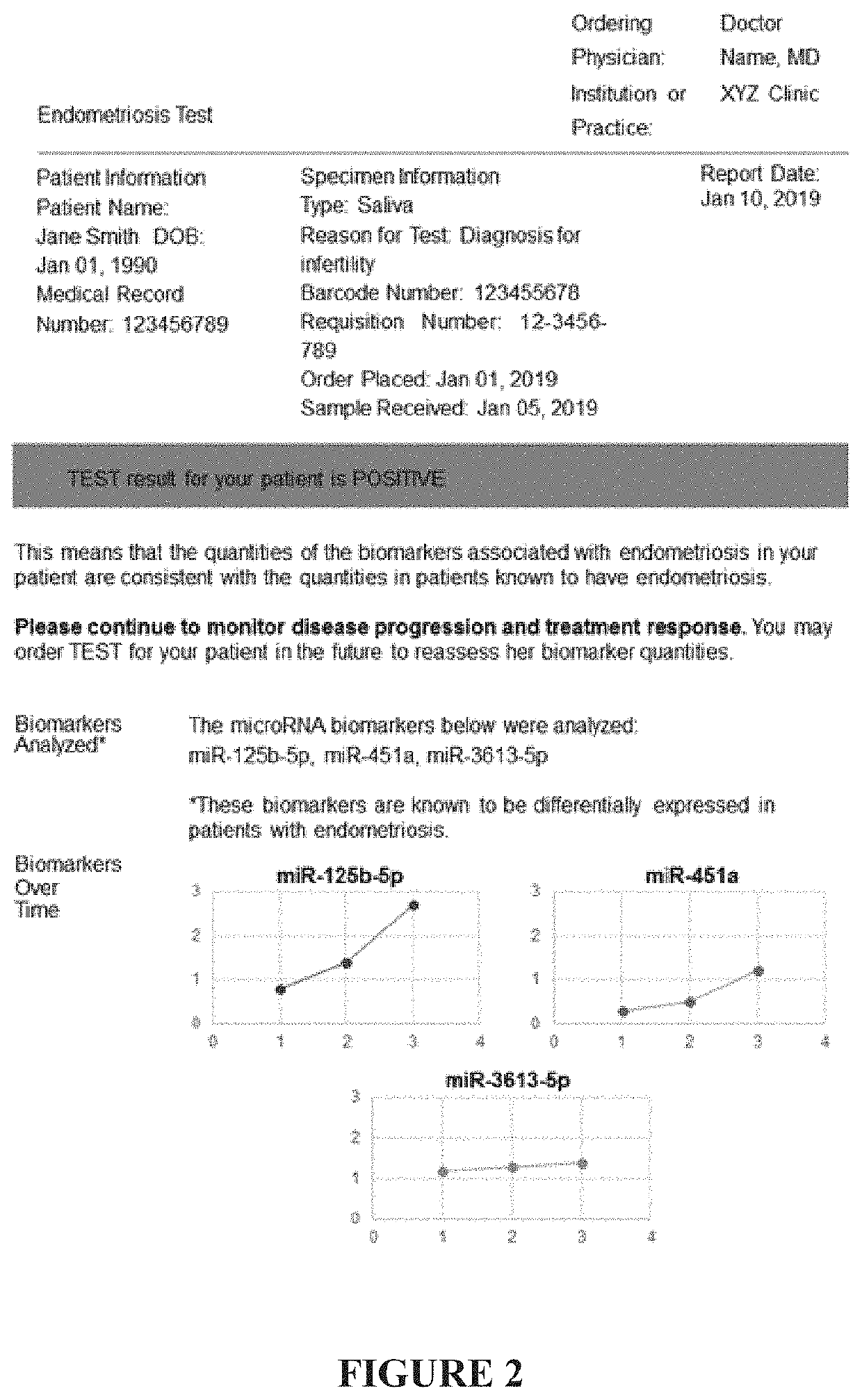Methods and compositions for detecting and treating endometriosis
a technology of endometriosis and compositions, applied in the field of methods and compositions for detecting and treating endometriosis, can solve the problems of finality proving ineffective in certain patients, and achieve the effect of minimally invasiv
- Summary
- Abstract
- Description
- Claims
- Application Information
AI Technical Summary
Benefits of technology
Problems solved by technology
Method used
Image
Examples
example 1
croRNAs as Diagnostic Markers for Endometriosis
[0147]Step 1: RNA Extraction from Saliva
[0148]Saliva samples (200 μL) were collected from both a female control group and a female group with clinically-verified endometriosis and transferred to 1.5 mL tubes. RNase free water was added to samples with volumes less than 200 μL in order to bring the total sample volume to 200 μL. 1 mL of QIAzol Lysis Reagent (Qiagen) was added to the sample. The tube was vortexed briefly, and the sample was allowed to incubate at room temperature for five minutes. Then, 200 μL of chloroform was added to the lysate and vortexed for approximately 15 seconds. The sample mixture was then incubated for two minutes at room temperature and centrifuged at 12,000×g for fifteen minutes in a cold room (approximately 4° C.). Approximately 560 μL of the aqueous phase was transferred to a new 1.5 mL tube. 840 μL of 100% ethanol was added to the 560 μL of aqueous phase to obtain a total volume of 1400 μL. 700 μL of the ...
example 2
, Diagnosis and Treatment of Endometriosis (Prophetic Example)
[0160]A blood, blood plasma, blood serum, menstrual blood, menstrual effluent, urine, or saliva sample is taken from a female patient with symptoms of endometriosis. The quantity of a signature of microRNA associated with endometriosis (for example, let-7a, let-7b, let-7c, let-7d, let-7e, let-7f, miR-135a, miR-135b, miR-18a, miR-125b, miR-143, miR-145, miR-150, miR-342, miR-451a, miR-500a, miR-3613, or miR-6755, or any combination thereof) is then determined in the sample, and the patient is diagnosed with endometriosis if the signature is within a certain window indicating the presence of endometriosis. The patient is treated with a therapeutically effective dose of a GnRH antagonist or agonist therapy (e.g., Elagolix). The compound causes a reduction in the symptoms of endometriosis. After one month of treatment, six months of treatment, and one year of treatment, the patient is assessed for levels of a microRNA signatu...
example 3
, Diagnosis and Treatment of Treatment-Resistant Endometriosis (Prophetic Example)
[0161]A blood, blood plasma, blood serum, menstrual blood, menstrual effluent, urine, or saliva sample is taken from a female patient with previously diagnosed endometriosis who is currently receiving a progestin-based therapy (e.g. dydrogesterone, medroxyprogesterone acetate, depot medroxyprogesterone acetate, norethisterone, or an oral contraceptive pill), but does not appear to be improving. In some cases, the patient may have refractory endometriosis. The quantity of a microRNA signature associated with endometriosis (for example, let-7a, let-7b, let-7c, let-7d, let-7e, let-7f, miR-135a, miR-135b, miR-18a, miR-125b, miR-143, miR-145, miR-150, miR-342, miR-451a, miR-500a, miR-3613, or miR-6755, or any combination thereof) is then determined in the sample and compared to a reference value associated with remission of endometriosis. This provides guidance for administration of a GnRH antagonist (goser...
PUM
| Property | Measurement | Unit |
|---|---|---|
| time | aaaaa | aaaaa |
| time | aaaaa | aaaaa |
| time | aaaaa | aaaaa |
Abstract
Description
Claims
Application Information
 Login to view more
Login to view more - R&D Engineer
- R&D Manager
- IP Professional
- Industry Leading Data Capabilities
- Powerful AI technology
- Patent DNA Extraction
Browse by: Latest US Patents, China's latest patents, Technical Efficacy Thesaurus, Application Domain, Technology Topic.
© 2024 PatSnap. All rights reserved.Legal|Privacy policy|Modern Slavery Act Transparency Statement|Sitemap



